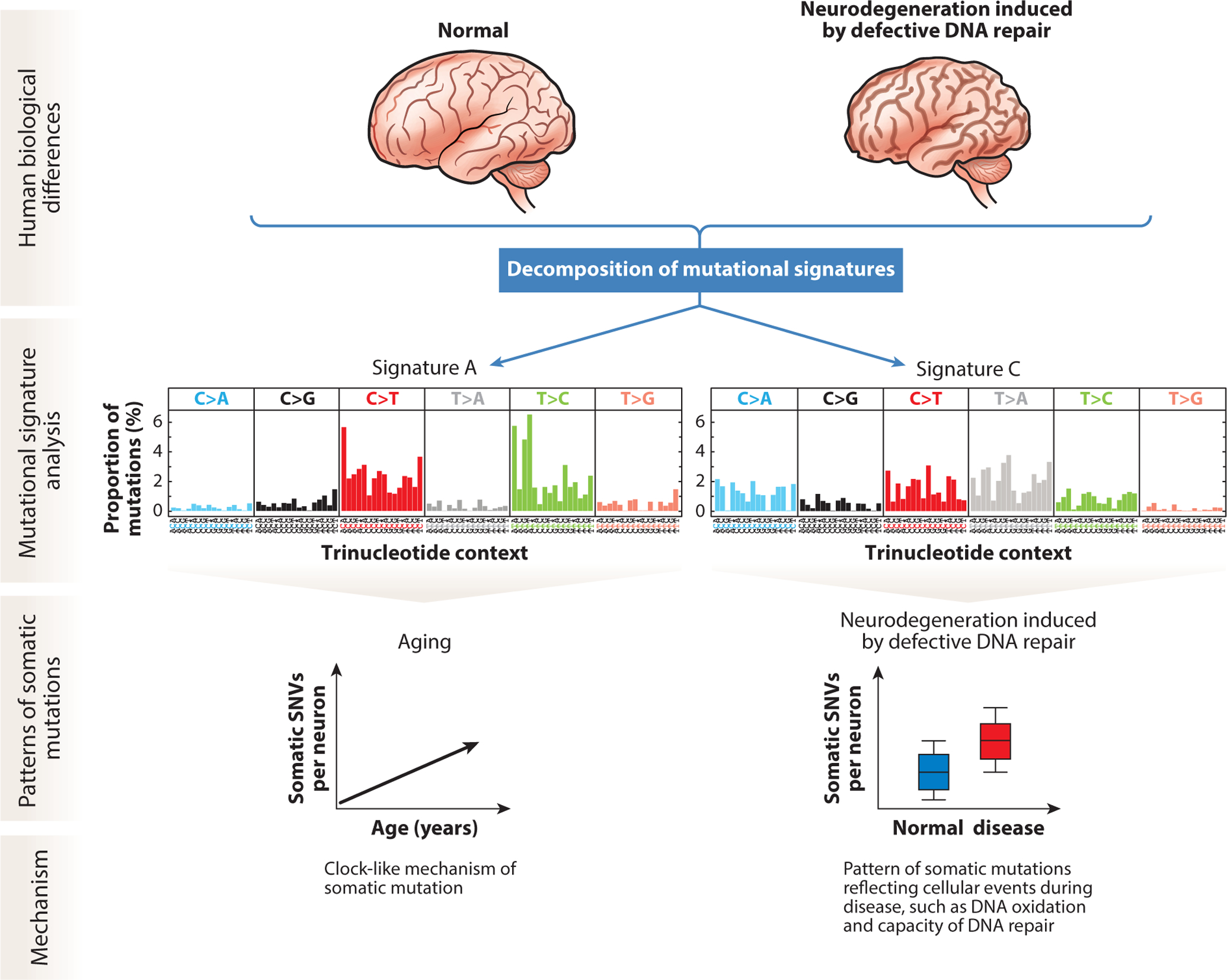Figure 3.

Neuron mutational signature analysis in aging and in neurodegeneration induced by defective DNA repair. Analysis of the specific base changes and their trinucleotide context reveals specific patterns of DNA alterations that are used to identify the causes of somatic mutations. Each cell’s mutational profile of the six possible base change types, subdivided by the 16 trinucleotide context combinations of 5′and 3′base identity, is used to computationally decompose signatures that align with biological variables in the samples. Signatures present in a given cell can point to biological events responsible for mutagenic forces that acted on that cell’s genome. Signature A, composed predominantly of C>T and T>C base changes, accumulates with age in neurons in a clock-like mechanism. Signature C, which contains multiple base changes, including C>A and T>A variants, is enriched in neurons in neurodegenerative diseases of NER deficiency. Signature C suggests oxidative damage and other events that surpass DNA repair capacity and lead to permanent DNA changes. Abbreviations: NER, nucleotide excision repair; SNV, single-nucleotide variant. Figure created by Ken Probst of Xavier Studio, with input from the authors.
